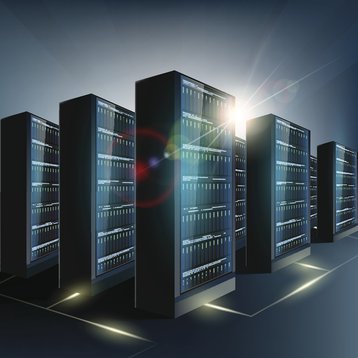Around the world, nations are transforming into digital economies. Every aspect of our lives increasingly relies on digital services that store and protect our data, provide vital services, and enable governments and public services to plan for the future properly. Our cities, transport, healthcare, and more are becoming more digital and more adaptive thanks to the growing network of digital infrastructure, with data centers at the heart.
As our reliance on digital infrastructure grows, data centers play a bigger role not just in delivering digital services efficiently, but also in understanding their impact on communities and the environment. Owners and operators have a chance to be responsible corporate citizens by actively engaging with their surroundings and helping build a more sustainable future.
Scale and context
To put the increasing digitalization of our economies and societies into perspective, in 2024, around 70 percent of the world’s population was Internet users, with stored data expected to grow from 50ZB in 2022 to 175ZB by the end of 2025. The number of connected Internet of Things (IoT) devices is set to soar from 25 billion in 2022 to 100 billion by 2050.
A significant driver of this digital growth is the demand for artificial intelligence (AI). One estimate is that AI could grow the global economy by 14 percent, or some $16 trillion, by 2030.
Nations around the world are racing to take advantage of this revolution, with some characterizing it as a new industrial revolution. In the UK, Peter Kyle, Secretary of State for Science, Innovation, and Technology, said: “We will turn our country into an AI superpower. But our ambition alone won’t define us; what will define us is how we achieve that ambition.”
This ambition is supported by UK government announcements for a £1 billion ($1.3bn) investment “to make our computing power 20x greater by 2030.” Kyle also cited international investors who have poured £45 billion ($58.9bn) into AI, leading to what Jensen Huang, CEO of Nvidia, declared that the UK had reached a ‘Goldilocks’ moment: “When our combination of world-class universities, AI start-ups and sheer ambition makes Britain ‘Just right’ as an investment destination.”
Critical infrastructure and circularity
Data centers are now essential to every nation’s critical infrastructure, with modern-day life simply unable to function without them. While they safeguard data and support business continuity, they are increasingly needed to take a leading role in decarbonization. Central to this is embracing circularity by repurposing, reusing, and recycling facilities, equipment, and resources to reduce environmental impact. With energy demands rising, the path forward lies in clean, renewable power, resilient microgrids, and effective reuse of waste heat.
Each wave of digital advancement has brought higher compute density and power use, along with a significant rise in heat generation. Today, that excess heat is being reimagined as a valuable resource, helping data centers boost efficiency while supporting communities, local economies, and sustainability goals.
Heat reuse
The prestigious Queen Mary University of London offers a standout example of how data centers can turn excess heat into community value. Facing growing demands on its data infrastructure, the top-25 globally ranked university, which is an active participant in initiatives like GridPP and the Worldwide LHC Computing Grid (WLCG) for high-energy particle physics, has committed to embedding sustainability across its operations.
To modernize its infrastructure, the university implemented a cutting-edge data center with hot and cold aisle arrangements feeding into heat pumps and exchangers. This system delivers 75°C (167 °F) water for heating and storage, which is enough to supply the equivalent of 2.8 million back-to-back student showers, or up to 52 simultaneously. As part of the NetZero and IRISCAST initiatives, which map the carbon cost of distributed, heterogeneous infrastructures, Queen Mary is proving how sustainable computing can support not only institutional goals but also contribute meaningfully to the local community and environment.
Across Europe, heat reuse is gaining traction. The 2025 State of European Data Centres Report found that 31 percent of colocation and hyperscale data centers already have the capability to provide heat coupling, with 38 percent actively investing in such projects.
In Germany, the first EU country to legislate heat reuse for new data centers with an energy capacity of 1MW or more, must reuse at least 10 percent of their heat by 2026, increasing to 20 percent by 2028, or establish contracts to supply district heating networks. One German project with Digital Realty and SAMSON AG has entered a long-term 15-year agreement under which waste heat from Digital Realty’s FRA 14 data center in Frankfurt will be piped directly to heat SAMSON’s Rolf Sandvoss Innovation Center beginning in October 2026.
Heat reuse takes many forms: heating homes, warming swimming pools and showers, supporting market gardens, and even powering lobster and shrimp farms. Emerging applications include eco-friendly wood pellet fuel production. These examples demonstrate how compute-intensive workloads from high-performance computing (HPC) to AI training generate vast amounts of heat, which, especially with the rise of liquid cooling, can now be recaptured as a valuable resource.
Looking ahead, circularity must be a core strategy in managing the growing energy demands of the digital age. As Queen Mary University shows, success lies in thinking beyond infrastructure and embedding data centers within surrounding communities and ecosystems. The technologies enabling circular practices like heat reuse are already here and continually evolving. Combined with a relentless drive for efficiency, these solutions will help data center operators not just meet energy challenges, but actively shape a sustainable, livable digital future.
More in The Energy & Sustainability Channel
Read the orginal article: https://www.datacenterdynamics.com/en/opinions/data-centers-come-of-age-as-critical-infrastructure-and-good-corporate-citizens/






